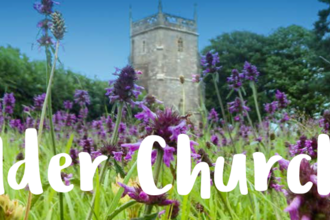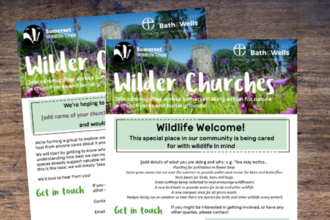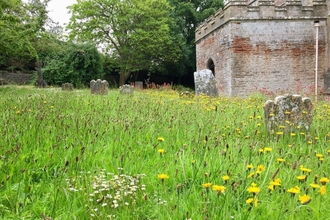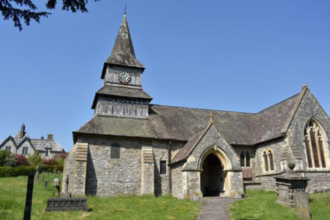Wilder Churches & Burial Grounds
Wilder Churches & Burial Grounds began in March 2021 as a partnership initiative between Somerset Wildlife Trust and the Diocese of Bath and Wells. The initiative supports communities to get to know the wildlife in their local churchyard, other church land or burial ground and work together to find ways to increase the value of these special places for wildlife.
Churchyards are often the oldest enclosed piece of land in a parish and many still support a rich variety of wildflowers and wildlife, having remained unscathed from the widespread loss of habitats seen in the wider countryside due to changing land management practices. The Diocese of Bath and Wells oversees 477 parishes of over 900,000 people in the county and are working with us to bring communities and church leaders together to learn more about their churchyard or burial ground and how they can manage them with wildlife in mind.
Upcoming events
Webinar recordings
It's never too late for a community to get involved in Wilder Churches & Burial Grounds! Below are recordings of an introductory 'new communities' session as well as the more detailed original training sessions, which you guide you through each step towards increasing the value of your local churchyard or burial ground for nature.
First Event of 2025 with Bishop Michael Beasley
Welcoming new communities
In this session held in Spring 2022, we welcomed new communities to the Wilder Churches initiative - so if you are wanting to know what the initiative is all about, watching this session is a great place to start!
An introduction to Wilder Churches
This is the first session in a series of online training and guidance. It took place in March 2021 and provides an introduction to the initiative and why churchyards and other burial grounds can be such special places for wildlife as well as for people.
Exploring the wildlife in your churchyard and engaging the community
This is a recording of the second event in a series of free ‘Wilder Churches’ online training and support. This session focuses on getting to know your churchyard with wildlife in mind, with advice and support on discovering the current value of your churchyard for wildlife, a vital first step in helping biodiversity in these special places.
The event also provides advice ways to communicate about Wilder Churches in your community and encourage others to join in, together with guidance on how to find out the key information about your churchyard and how it is currently managed. Catch up on the video and if you are interested, please let us know and get involved in your community!
Increasing the value of your churchyard for wildlife
In this session, Pippa Rayner, the Trust's Engaging with Nature Coordinator, provides advice and support on potential beneficial actions for wildlife in your churchyard, other church land or burial ground. This includes examples of what some communities have already achieved in their local churchyard and what they have learnt along the way.
Emma Brown, Church Buildings Adviser for the Diocese also provides information on things to consider when planning to take action for wildlife in your churchyard and how to get in touch for detailed guidance. Ensuring everyone in your community has a chance to share their ideas and thoughts on how the churchyard is cared for is also really important. Pippa suggests ways to consult your community and together identify actions for wildlife that work for your community and the church.
Creating a management plan
In this session, Pippa Rayner, the Trust's Engaging with Nature Coordinator, provides advice on creating a simple, practical management plan for your churchyard, other church land or burial ground that outlines how the churchyard is being cared for with nature in mind and why, as well as ways people can help.
Sara Emmett (Assistant Diocesan Environment Officer) from the Diocese of Bath and Wells also provides advice on potential sources of funding and other ways to help with any financial costs that can arise from changing management or creating habitats as part of your plan, particularly at the start.
Sharing stories
In this session we hear from communities across Somerset, who share their stories of the wildlife they have discovered, the actions they have taken and what they plan to do in the future in their local churchyard or burial ground.
Pippa Rayner, the Trust’s Engaging with Nature Coordinator, also suggests key things to think about that will help you to look forward to the year ahead and plan your next steps for helping wildlife.
Focus session: Bringing your community with you
This dedicated session focuses on the importance of engaging your local community from the very start and provides useful advice and ideas about ways to communicate, consult and bring people together.
Resources
In order for nature to recover, we need many more people on nature’s side. The science shows that if just one person in every four (25%) visibly takes action, this can be enough to change the minds and behaviour of the majority. By taking visible action for nature, no matter how small, you can make an impact and invite more wildlife back into our lives.
Key to the Wilder Churches initiative is the ongoing support provided to anyone and everyone interested in being involved. Free online training sessions and get-togethers are supporting communities to take positive action in churchyards and other burial grounds at a pivotal time for nature. See below for more resources and advice to help get you started.






























